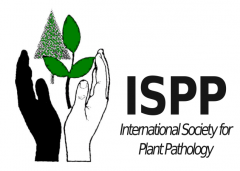OCCURRENCE OF CUCUMBER MOSAIC VIRUS IN OLEANDER NERIUM OLEANDER IN HUNGARY
P. Salamon, K. Salánki, K. Nyerges3, K. Nemes
doi: 10.4454/jpp.v98i3.3769
Abstract:
In June 2016 mosaic symptoms characteristic of viral in- fection were observed in a ten year-old potted oleander (Ner- ium oleander) maintained in Velence (Hungary). Inoculation of test plants (Chenopodium, Cucumis and Nicotiana spp.) with extracts of diseased oleander leaves demonstrated the presence of a mechanically transmitted plant virus marked Nol. The Nol isolate caused local lesions on Chenopodium quinoa, mosaic on Cucumis sativus and local etched ring pat- tern followed by vein clearing and recovery on the top leaves of Nicotiana tabacum cv. Xanthi-nc. These symptoms sug- gested the presence of B pathotype (subgroup II strain) of Cucumber mosaic virus (CMV). CMV was identified in the oleander leaves using CMV specific lateral flow immunoas- says (Bioreba AgriStrip).
To confirm the presence of CMV, total RNA was extract- ed from N. clevelandii infected with CMV-Nol and used in RT-PCR with subgroup I and II CMV coat protein (CP) gene specific primers, respectively (Salanki et al., 1997). The DNA fragment of the expected size (1460 bp) was amplified from tobacco leaves using subgroup II specific primers solely. The PCR product was cloned into pGEM-T Easy Vector (Pro- mega, USA), sequenced (Biomi, Hungary) and the complete CP gene nucleotide sequence was deposited in GenBank (accession No. KX951465). The complete CP gene of CMV- Nol showed 99% nucleotide and 100% amino acid sequence identity with a Serbian CMV isolate (232Mrg, accession No. KP034963.1). This is the first record on the natural occur- rence of CMV in oleander in Hungary.




